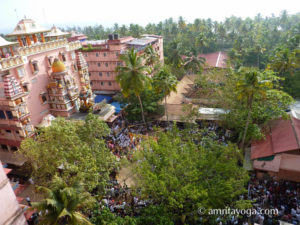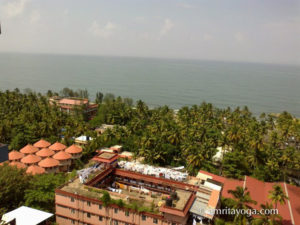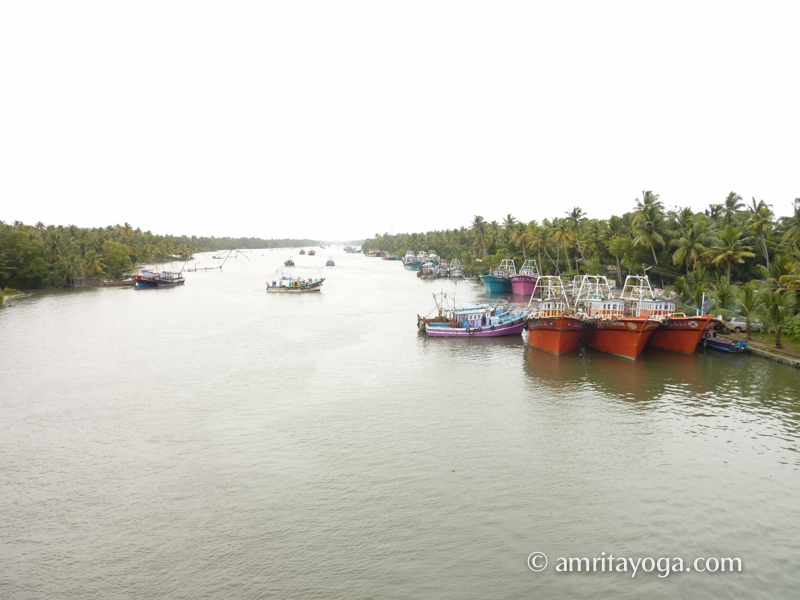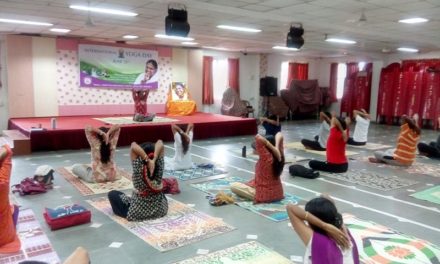 “Children, this ashram exists for the world; it belongs to you, to all the people who come here.” – AMMA
“Children, this ashram exists for the world; it belongs to you, to all the people who come here.” – AMMA
Amritapuri Ashram was built on the very property where Amma was born; it is now the headquarters of Amma’s worldwide mission and the spiritual home for Amma’s monastic disciples and hundreds of householder devotees. All the residents have dedicated their lives to realizing God and serving the world. They came here from all over India and from all over the world. Amma sees each and every one, listens to their worries, consoles them, encourages them and provides new direction to their lives. Visitors are also welcome and get the same personal darshan with Amma. Many of them have been coming regularly every year.
Amritapuri is the living example of the ancient Indian ideal: “the whole world is one family” (vasudhaiva kutumbakam). Here you will find people from all parts of the world speaking different languages and having different customs and religions — all living under one roof. In their quest for the meaning of life, each has forgotten their differences and become a child of Amma.
 It is incredible to see how a humble, remote fishing village cradled between the backwaters and the Arabian Sea has become the center of a silent spiritual revolution.
It is incredible to see how a humble, remote fishing village cradled between the backwaters and the Arabian Sea has become the center of a silent spiritual revolution.
What is an Ashram?
Amma has said that an ashram is a place where people devote all their time and energy to the remembrance of God, doing selfless service and developing qualities like love, patience, and respect for others. They do spiritual practices to help them see unity in diversity.
In the beginning, the ashram was simply Amma’s family’s house. The handful of brahmacharis slept on the sand under the stars. Amma had a small hut built next to the parents’ house, which doubled as a kitchen. It was also where Amma and the early female disciples stayed. Soon, they needed more space, so the first three disciples asked Amma’s father if they could stay with Her permanently. He gave them a space on the backwaters. Using mud and sand as landfill, they reclaimed the land and built a small palm leaf hut.
Gradually, huts were added near the parents’ house for the brahmacharis, and a proper, yet humble, room was constructed for Amma. This simple room is where Amma still stays today.
Flourishing of the Ashram
 When Amma first started Krishna Bhava beside the beach road, there were many people coming, so Her father became very anxious for Her safety. He converted the family’s original cowshed adjoining his house for Amma to sit, meet people and to give darshan. Later, he allowed this place to be converted into a small temple. This is a very special place and is known as the old Krishna temple or the Kalari. This first temple still exists today. It is now used for conducting pujas.
When Amma first started Krishna Bhava beside the beach road, there were many people coming, so Her father became very anxious for Her safety. He converted the family’s original cowshed adjoining his house for Amma to sit, meet people and to give darshan. Later, he allowed this place to be converted into a small temple. This is a very special place and is known as the old Krishna temple or the Kalari. This first temple still exists today. It is now used for conducting pujas.
The Kali Temple
As the number of devotees coming for Amma’s darshan grew bigger and bigger, it became necessary to construct a larger darshan hall. It was then that the beautiful Kali Temple and the main shrine were built. It was the first big cement structure to be built and took five years to finish, from 1988 to 1992.
In those days, all the disciples helped with the construction, especially the concrete work. Often, Amma would lead the work shifts. Above the central entrance stands a majestic statue of Lord Krishna driving the chariot of Arjuna during the Mahabharata War. Lord Krishna gave the teachings of the Bhagavad Gita at the outset of the war. The temple’s inner shrine is dedicated to the Goddess Kali, who is the symbolic destroyer of negative tendencies. The Kali idol was crafted in Kolkatta as per Amma’s instructions. Mother Kali is the destroyer of the ego.
 Amma gave darshan there until the early 2000s. But even the Kali temple became too small for the huge crowds, and an enormous hall was erected behind the temple. It is today the largest such hall in Southern India, with 30,000 sq. feet and no pillars to block the view. This is where Amma sings bhajana every night and holds darshan regularly now. A part of this serves as a large dining hall.
Amma gave darshan there until the early 2000s. But even the Kali temple became too small for the huge crowds, and an enormous hall was erected behind the temple. It is today the largest such hall in Southern India, with 30,000 sq. feet and no pillars to block the view. This is where Amma sings bhajana every night and holds darshan regularly now. A part of this serves as a large dining hall.
Present Day
Amritapuri has had to evolve to accommodate the basic living needs of any type of person. Many elderly and invalid people, children and even small babies live there today.
Today, Amritapuri is a city with towering buildings of flats for householders and visitors, hostels for students, who study at the ashram college across the river, big dining halls, many offices (including a bank and post office), numerous departments, and a hospital. But no matter how big it gets, it is still retains Amma’s presence. The ashram is still very much run according to the ancient traditions.
All the residents and visitors attend to the ashram work themselves. Amma’s many devotees look upon Amritapuri as their spiritual home and as a fertile field where noble spiritual qualities can be abundantly cultivated and the fruit of God-realization reaped.





